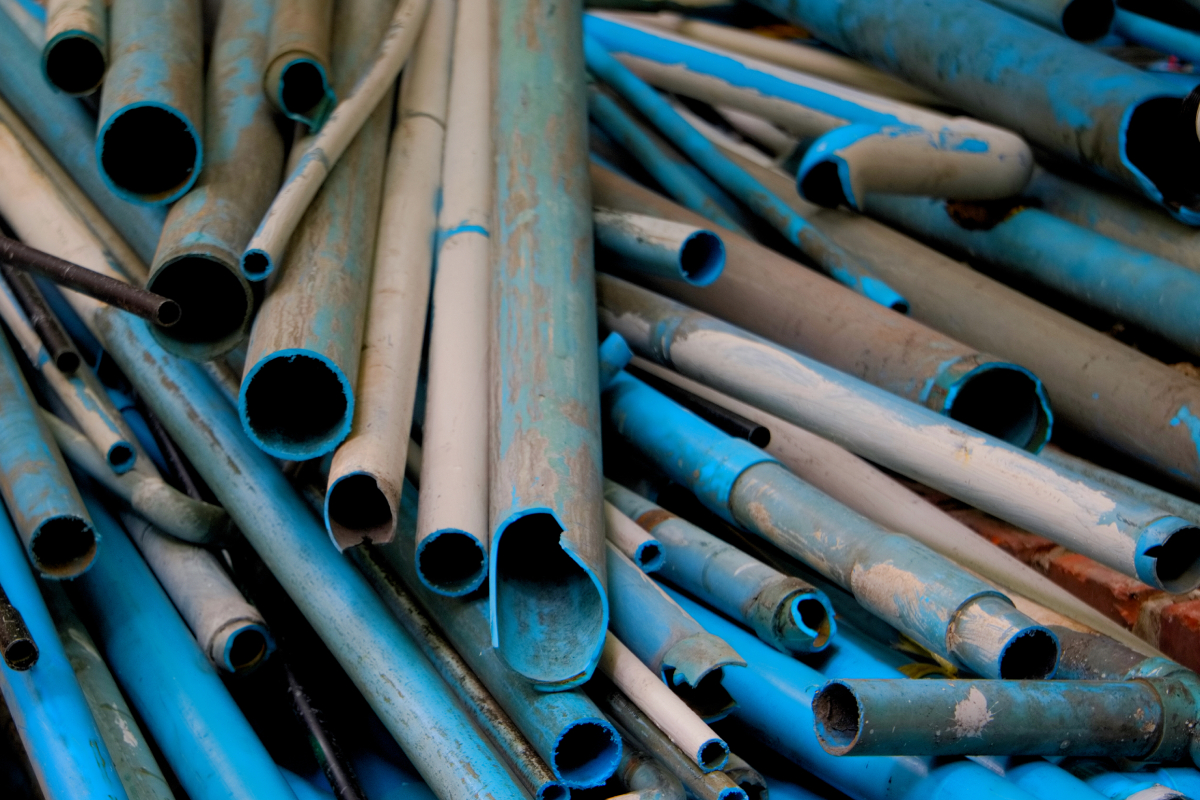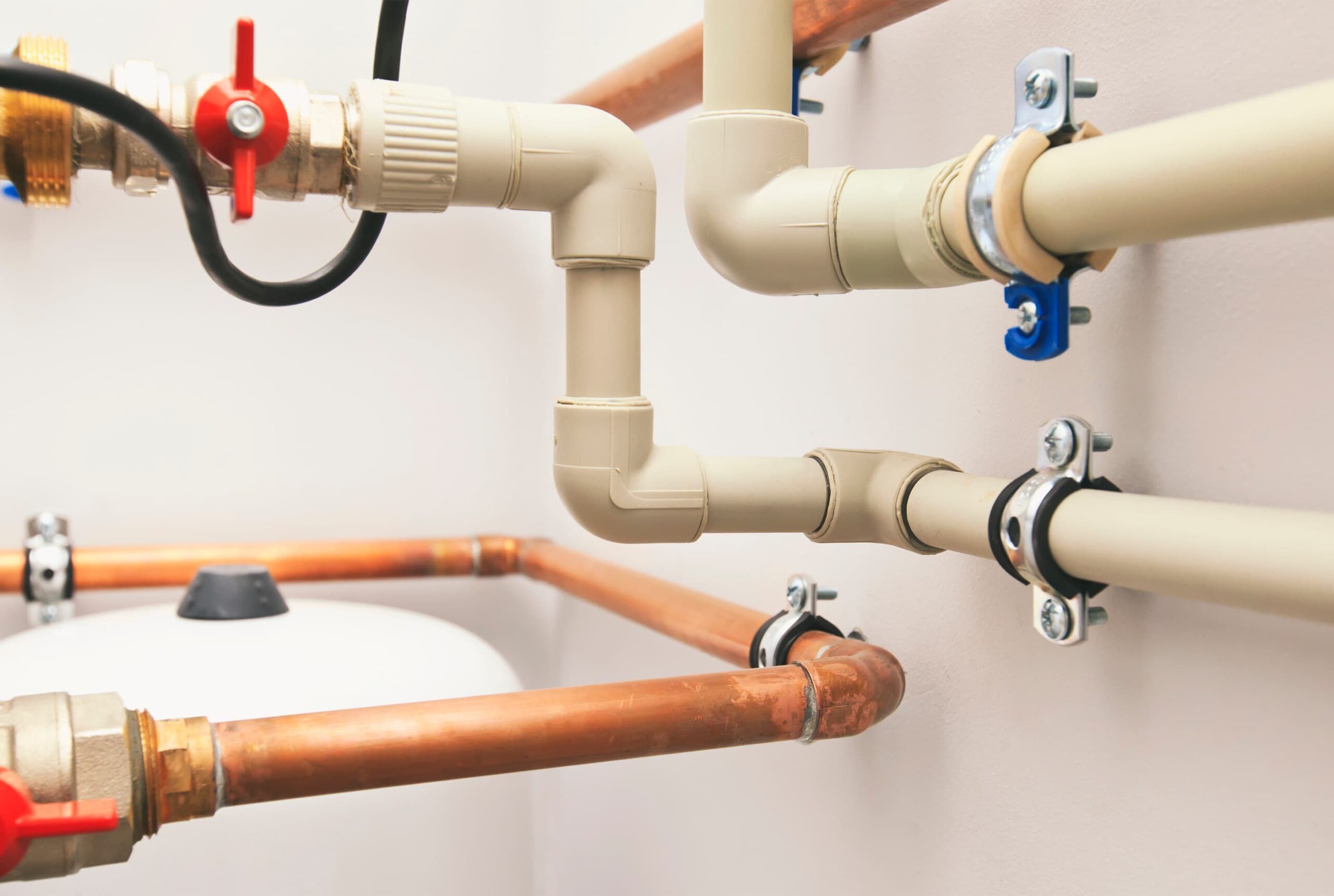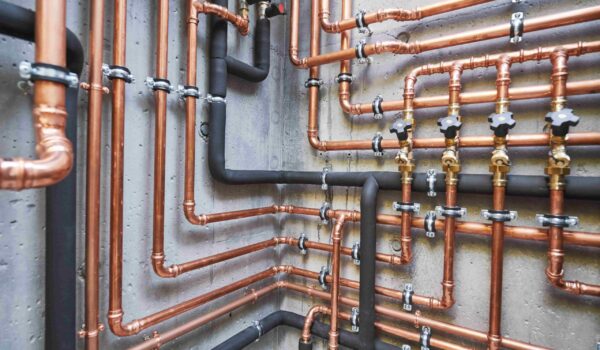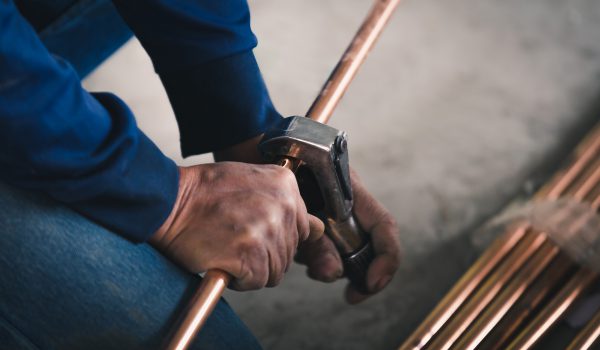If you’re looking to install a new central heating system in your home, you’ll likely be faced with a choice between plastic and copper for the pipes that connect the heat source to the outlets.
The use of plastic pipes for central heating has grown in popularity over the last couple of decades and are now fitted as standard in many new-build homes. While they are cheap and relatively easy to install, their quality and longevity does raise some questions.
So, what are some of the main problems with plastic central heating pipes? Are they right for you? And what alternatives are available? Let’s find out.
The rise of plastic pipes for central heating
For many years, central heating pipes were predominantly made with metals like copper, cast iron and steel. Plastic came into the picture in the second half of the 20th century, and by the 1990s materials like polybutylene (PB) cross-linked polyethylene (PEX) and multi-layer composite (MLP) were becoming increasingly common options.
The emergence of these materials coincided with an increased adoption of value engineering, a design methodology that seeks to reduce the costs of a construction project by substituting materials for cheaper alternatives capable of performing to a similar level.
Because of its low price point, plastic pipes soon became a popular alternative to the metals that had long been used and hailed gold standard in central heating systems, despite a lack of evidence that these new materials could offer the same standard of quality.

Learn more about the rise of plastics in construction below.
Problems with plastic central heating pipes
Today, plastic heating pipes are routinely specified in new-build homes, as well as many retrofitting projects. However, there is plenty of evidence to suggest that plastic makes a poor substitute to the metals they sought to replace.
Plastic heating pipes are poor conductors of heat
One of the main factors influencing the overall quality of central heating pipes is thermal conductivity, with materials that are good conductors helping to transfer heat through the central heating system more efficiently.
While energy efficiency varies from plastic to plastic, across the board plastic heating pipes are less thermally conductive than their metal counterparts. The thermal conductivity of copper, for instance, is about 2,000 times greater than most plastics, with copper’s conductivity placing at approximately 413 W/mK, while most plastics have a thermal conductivity of between 0.19-0.25 W/mK.
So, what does this mean once installed within a building? The less thermally conductive, plastic heating pipes take longer to transfer heat from the source to the outlet, expending more energy than their more thermally conductive counterparts to reach the desired temperature.
This generally leads to increased energy consumption, operating costs and emissions.
Plastic heating pipes can become brittle
While modern plastics are much stronger than their predecessors, the materials commonly used for central heating systems today remain less durable than metal alternatives like copper and steel, and as such tend to have a shorter service life.
Plastic heating pipes are more vulnerable to changes in temperature, with plastic more likely than metal to expand and contract when heated. Unlike metals, plastic pipes can also be damaged by mice, which can present problems in rural areas where rodents are more common.
These factors mean that plastic heating pipes are more likely to require regular repairs, as well as earlier replacement, which can outweigh the initial cost savings that come with choosing plastic over more robust materials.
Plastic heating pipes are harmful for the environment
One of the more widely publicised issues with plastics are their impact on the environment. Most plastics still aren’t recycled due to the fact it’s notoriously difficult to retain plastics properties or value in the final product. Despite the claims of many manufacturers, this is no different with plastic heating pipes.
PEX, one of the most widely used plastics for central heating systems, is known for being virtually impossible to recycle. Other materials like PVC can only be recycled a handful of times before rendered fully useless. However, it is important to note that plastic recycling follows a downward spiral and with every time plastic is shredded and remoulded it loses some of its original quality. Meaning it is unlikely the plastic used once for pipe would have the right properties to be used again for the same type of pipe.
Chemical recycling has been pushed by plastic manufacturers as a way to recycle plastics without a loss of quality. That being said, there is little evidence to suggest that this new form of plastic recycling is actually effective and can ever occur at scale.

Learn more about the potential pitfalls of plastic heating pipes below.
Alternatives to plastic heating pipes
The main selling point of plastic heating pipes is their competitive price point and relative ease of installation, which creates an allure of immediate cost savings often leading property owners to pass over other materials that are better suited to the job.
Many of the metals that were popular before the emergence of plastic heating pipes remain in use today. Copper, carbon steel and stainless steel are three robust and thermally conductive materials with properties that are especially suited to central heating pipework.
Of these three, copper is most likely to be used in domestic settings, owing to its ability to be bent into different shapes and relatively low weight compared to other metals like stainless steel. Not only that, but it can also be recycled an infinite number of times without any loss of quality.
The stronger mechanical properties of metals like steel and copper can help extend the service life of a central heating system. Compared to plastic heating pipes, these materials may last 10–20 years longer, while also requiring less ongoing maintenance.
Being more durable and energy-efficient, metal pipes may actually be cheaper than plastic across the service life of the product, which is another point to consider when assessing the cost of different piping materials.

Learn more about the benefits of copper pipes for central heating below.
Are plastic heating pipes right for you?
Deciding which central heating pipes are right for you is ultimately a question of your own personal needs. While plastic pipes may be cheaper in the short term, any cost savings are likely to provide upfront, will be offset over the lifetime of the central heating system.
With metal pipes like copper, there is a guarantee of quality and longevity that dates back many decades, before plastic heating pipes even entered the market. Thermally conductive and resistant to expansion from heat, copper also has a set of properties that are well-suited to heating pipework.
One of the more selfless reasons to consider copper over plastic is the considerable impact of plastics on the environment. At present, plastic heating pipes that reach the end of their service life will most likely be incinerated or sent to landfill, generating waste and carbon emissions.
Copper, on the other hand, has a well-established recycling infrastructure, with pipes from disused buildings collected as scrap and then melted down for casting into new products that can re-enter the circular economy.
With the construction industry being one of the biggest contributors to climate change, action must soon be taken to embrace more sustainable processes, starting by making more conscious decisions about the materials we use in the built environment.
Fed up with greenwashing from plastic manufacturers? Want to learn more about the role of copper in shaping a more sustainable future? Check out some of our other news articles or subscribe to our newsletter!

